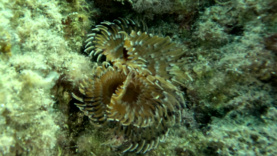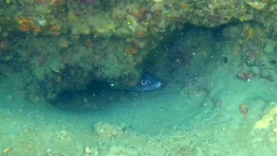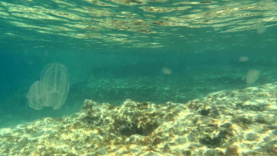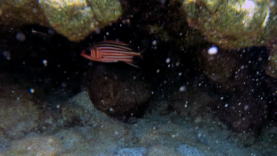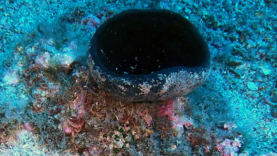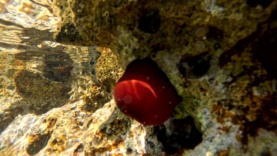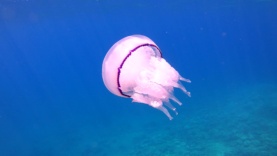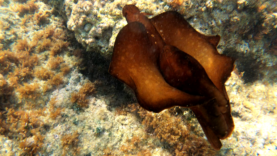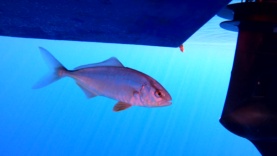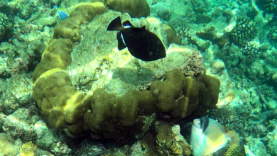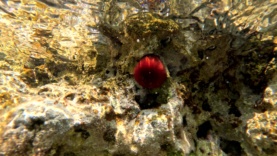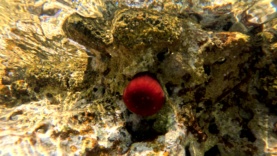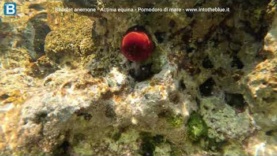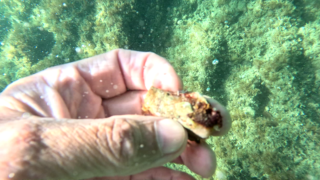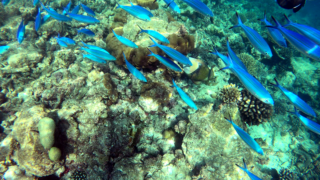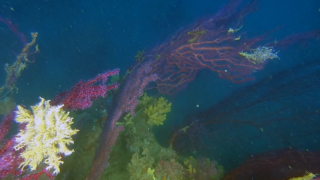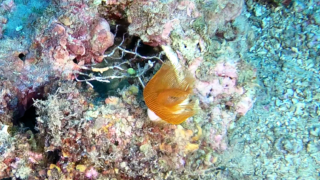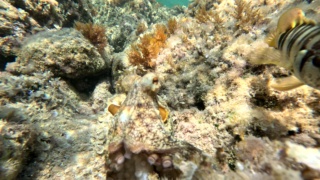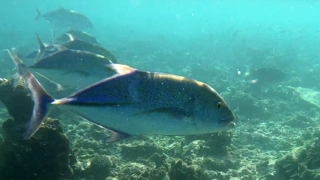Beadlet anemone
Beadlet anemone – Actinia equina – is one of the most common species of anemone or actinia in the Mediterranean Sea. It lives in the intertidal zone. The intertidal zone, also known as the shoreline, is the area above the water level at low tide and underwater at high tide. Simply put it is the area within the tidal range.
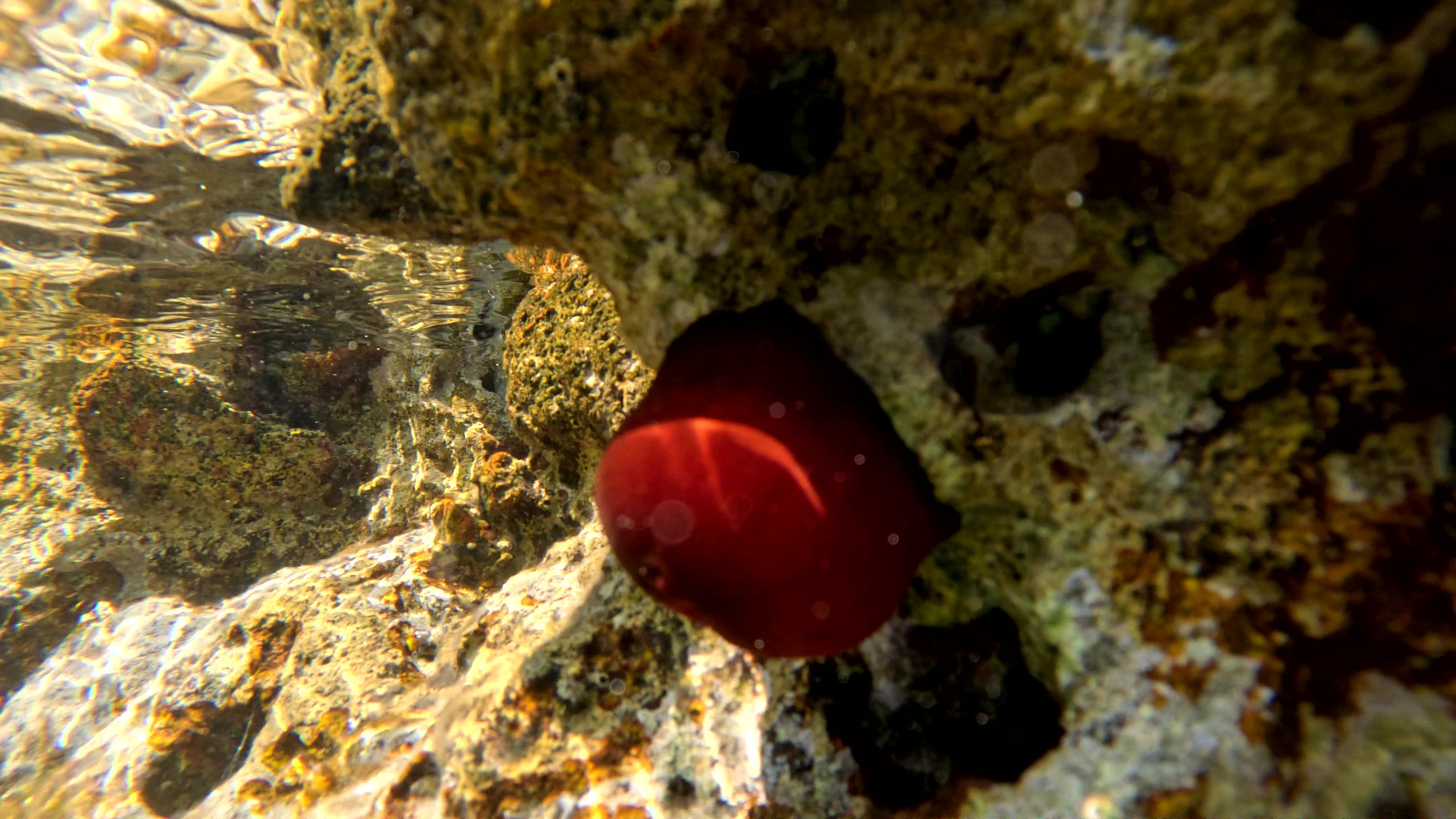
Many marine organisms live in this area and it is a real ecosystem or habitat. Organisms in the intertidal zone are adapted to an environment of extreme conditions. The intertidal zone is also home to several species of different phyla (Porifera, Annelida, Coelenterata, Molluscs, Arthropoda, etc.). Water is available regularly with the tides, but varies from fresh with rain to highly saline and dry, with drying between tidal floods. Wave splash can push residents away from the coastal area. With the intertidal zone’s high exposure to sunlight, the temperature can range from very warm to freezing in colder climates.
https://hmn.wiki/it/Intertidal

Actinia equina (Linnaeus, 1758), commonly known as Beadlet anemone, is an anthozoan cnidarian of the Actiniidae family, which inhabits the intertidal zone, up to a few meters deep.
Description
It is a small sea anemone (3-9 centimeters), bright red to brownish red in color, equipped with stinging tentacles, sometimes lighter in color.
The body is cylindrical and has a pedal disc at the base that is wider than the trunk above. The mouth opening is surrounded by about 200 rather short tentacles. During low tide it often remains out of the water, taking on the appearance of a small ball, or a tomato, hence the name, with a gelatinous appearance with a hollow in the centre. When it is completely submerged, it extends its tentacles and takes on a shape similar to that of a flower.
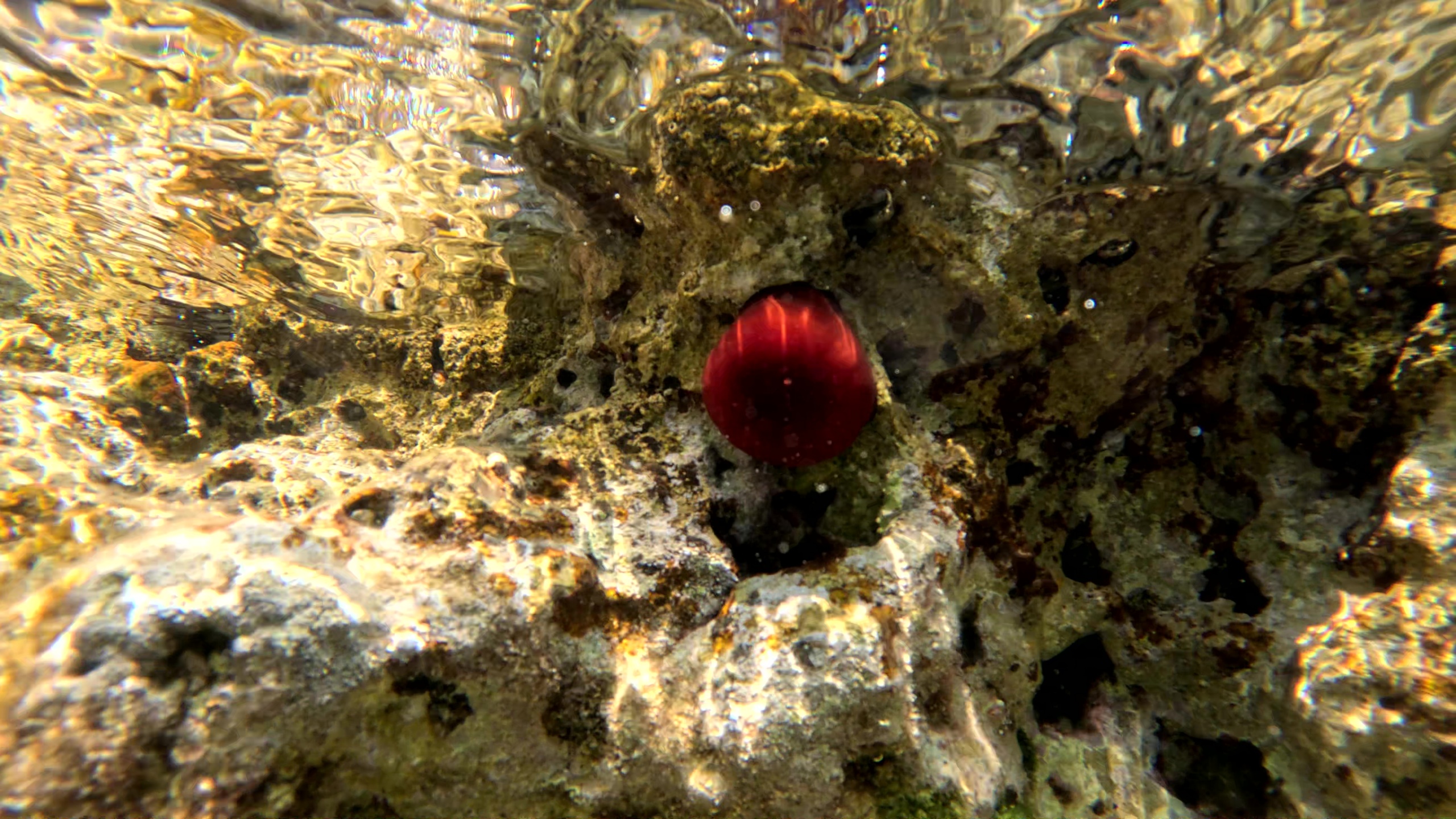
Biology
It lives anchored to rocks, but is able to move, albeit very slowly, by sliding on the pedal disc. It has strong resistance to external stress, thanks also to its ability to resist without water and at high temperatures for many hours.
Diet
It is a carnivorous species; it feeds on molluscs, crustaceans and small fish that it captures with its tentacles, equipped with stinging cells that paralyze prey.
Reproduction
As a rule, it reproduces by mating between specimens of different sexes, but it can also reproduce asexually by fission.
Distribution and habitat
Almost cosmopolitan, it lives in the intertidal zone of the seas of the temperate area, from the Atlantic to the Indo-Pacific. Common in the Mediterranean Sea where it populates coastal rocks.
https://it.wikipedia.org/wiki/Actinia_equina
https://en.wikipedia.org/wiki/Beadlet_anemone
Gallery

